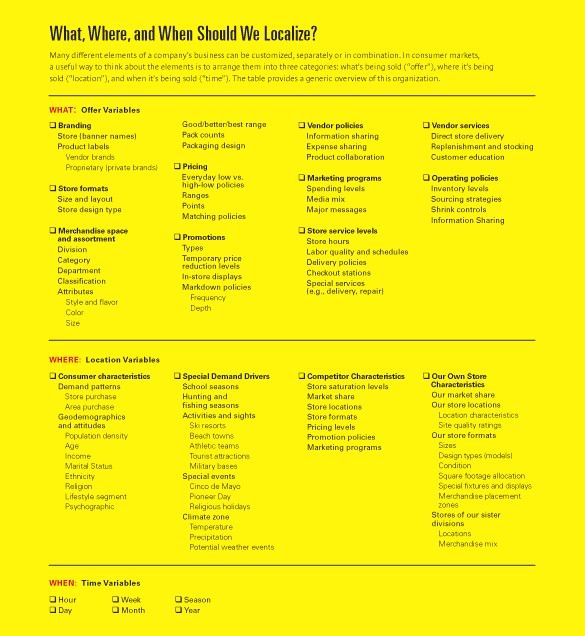Content localization mistakes cost you - here's how to fix them (every time)
Discover how to perfect your content localization strategy by avoiding these top 10 mistakes.

More than half of all consumers prefer product information in their own language. This fact underscores the importance of content localization when entering new markets. To do this effectively requires a comprehensive strategy that involves all parts of the organization, from product development to marketing. Mistakes are common, but they can be managed and corrected.
Content Collision (C2) helps global tech companies grow in Southeast Asia, focusing on Indonesia. Their work has identified common localization mistakes that hinder marketing success in these regions. Overcoming these challenges is necessary for entering the market successfully.
This guide lists the top ten localization mistakes and offers clear solutions for each. Following these steps will help teams improve their localization efforts, making their strategy more effective and boosting confidence in their market approach.
1. Your team don’t have list of banned words
Entering new markets brings a challenge: what words might offend people locally? The variety in dialects and languages, even within one place, makes localizing content complex. Therefore, starting by building a list of words to avoid for each target area can help prevent problems for your brand.
These problems can arise from small misunderstandings that can have a big impact, with some even leading to potential image crises. So, knowing your audience in detail by looking at their demographic aspects is a great way to start.
Here's what you can look at: consumer habits, regional demographics, attitudes, and relevant timing. This helps ensure content fits well with local values and avoids mistakes.

Creating this list is a team effort. People who know the local culture and language should work together on it. The goal is not just translating words, but to understand their deeper meanings in the local context. This work needs to continue as languages and cultural norms change.
2. Skipping 2 layers reviews from the local team
We get it. Sometimes, for speed's sake, content needs to get out to the public quickly. But what's worse? When the public mistakes your content's main message. This mistake usually comes from relying solely on translation tools for content review. This is the classic beginning of every "lost in translation" phenomenon.
The thing is, tools can't understand the little things in a language, and one person might miss something important or be biased.
A better way is a two-step review by a local team. First, someone who knows the target language well translates or changes the content. Then, another person on the team checks it to make sure it's accurate and makes sense culturally.
This two-step process helps in a few ways. It catches mistakes and ensures the content connects with the target audience. Working with a local team helps you learn about the culture, which is useful for future projects. By working together, you gain a deeper understanding of the market, which is key to successful localization.

3. Ignoring local relevance by pushing a single message
The meaning of "relevance" in content creation isn't fixed. Content successful in one market might not work in another. In marketing, this can happen when companies focus on promoting existing messages or features without considering if they'll fit the new audience culturally.
To connect with a new market, your message needs to be relevant to the local audience. This means considering their interests, needs, and cultural background. When you have done these, there is a possibility you need to change a bit of your marketing plan, even to the creative aspect. But at least, that's better than just assuming your content will work well in the new market.
To conduct thorough market research like this, you need to work with local experts or teams familiar with the cultural landscape. This approach allows companies to adapt content to local preferences and expectations, making it more engaging and effective.
Additionally, involving local people in the content creation process can provide valuable insights and feedback to the current marketing plan, but also provide you feedback that later on beneficial to the evaluation process.
4. Assuming global formatting works everywhere
Audiences expect content to be formatted for their region. Ignoring local format can confuse readers, and this small mistake can distort the message of your campaign. Logically, with limited time to grab the audience's attention, they should be focusing on your product message, not the region where your formatting originates.
Use the right date format, time zone, and currency symbol. If mentioning prices, convert them to the local currency. This makes your content clear, reliable, and effective for your target audience.
5. Ignoring SEO practice
Translating keywords directly can hurt your search ranking in a new market. Search habits and phrases differ globally. For strong SEO, research and adapt keywords to fit local searches. This might involve using synonyms, related terms, or entirely different phrases.
To ensure your keywords are truly relevant to the local audience, consider partnering with a local SEO expert in your target market. These experts understand the specific search terms and phrases that resonate with local users. They can help you research, adapt, and strategically incorporate these keywords into your content.
This collaboration optimizes your content for local search engines, increasing its visibility and connecting you with potential customers in the new market.
6. Assuming tone and style can travels
Marketers sometimes think audiences of similar ages will react the same way to a message, regardless of location. But forget about that! Cultural differences in humor, communication styles, and preferences are real.
These differences can make your creative team work harder and can also affect the media and platforms you choose for different regions.
Here's the key: Regularly get feedback from local teams or focus groups to see if your tone feels natural and engaging. Localization isn't just translation, it's adapting your content to the local language and culture so it speaks directly to your target audience.
7. Missing out on local celebrations
Holidays and festivals are important events everywhere, but their timing varies globally.
While your product might be relevant year-round, strategically aligning your marketing efforts with local celebrations allows for better preparation. This ensures you can craft the most impactful narrative for your product introduction, minimizing any potential cultural misunderstandings.
Understanding local holidays and festivals opens doors for more effective marketing. Consider creating special promotions or greetings tailored to Indonesian holidays like Idul Fitri or Independence Day.
This demonstrates cultural awareness and fosters deeper connections with your audience. Although some planning is necessary, it can significantly enhance the effectiveness of your marketing efforts.
8. Purposely pushing idioms into the area
Eye-catching phrases with unique meanings, called idioms, can be a challenge in global marketing. Although English is widely spoken, using English idioms directly in content for non-English audiences can lead to misunderstandings. Idioms are rooted in a specific culture and often lack direct equivalents in other languages.
The key? Find local expressions instead of forcing literal translations.
Focus on finding local expressions that capture the same idea. This requires understanding both the intended message and the cultural context of the target language. Collaborating with local language experts can help identify suitable expressions that resonate with the audience while preserving the original message. Adapting content in this way ensures clear communication and demonstrates your commitment to connecting with your audience on a deeper level.
9. Pushing product name into the area
Picking a product name that works everywhere is tough. A key factor? Making sure it's easy for your target audience to say and remember in their local language. Complicated or strange names can make it hard for people to talk about and recommend your product.
For international markets, aim for simple and clear names. This might mean creating a new, localized name that fits the language and culture. Market testing and getting feedback from local consumers helps you understand how a name will be received and if it causes any problems. By choosing a catchy and memorable name, you can improve your brand's reach and compete better in new markets.
10. Overlooking the need for a local regulatory expert
Different countries have different rules on things like copyright, trademarks, and even certain words or phrases. A misstep here can lead to serious legal trouble, like copyright infringement.
To avoid this, have someone on your team stay on top of these local regulations. This applies not just to text, but also to images, symbols, and any creative assets you use. What's okay in one place might be offensive elsewhere, and nobody wants an international PR nightmare!
By including legal review in your localization process, you can avoid violating local laws or causing cultural offense. Having a dedicated point person shows your respect for local cultures and legal systems. This careful approach can save you money on lawsuits and protect your brand reputation globally. Investing in this area is key to smooth and respectful international marketing.
Content Collision provides performance-based digital PR services and B2B content marketing services for tech startups in APAC and beyond. Book a discovery call to learn more.


